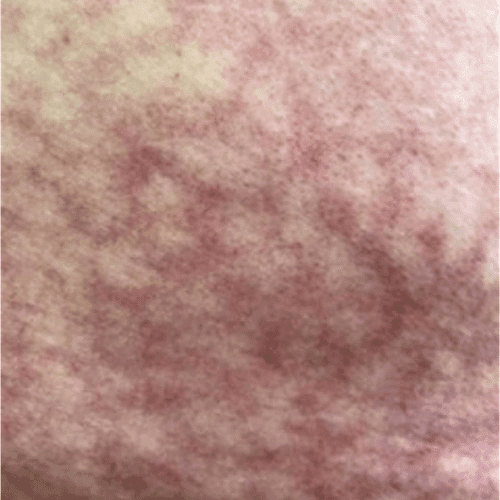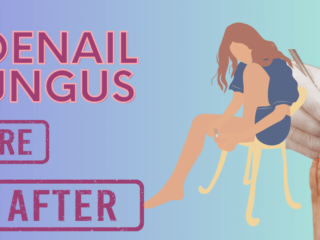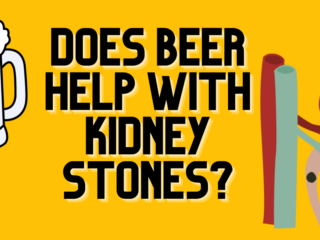Erythema ab igne, or toasted skin syndrome, is a condition that causes discoloration, itching, and burning sensations on the skin, caused when the skin is exposed to heat for long periods of time but without the heat being hot enough to cause serious burns on the skin. This article will tackle its risk factors and a few toasted skin syndrome treatment options you could consider.

What Causes Toasted Skin Syndrome?

The condition’s name comes from Latin and translates to ‘redness from fire.’ EAI is characterized by red skin discoloration, itching, and burning sensations. It used to be a common condition among the elderly who stood or sat close to fireplaces or electric space heaters. Although the rise of central heating systems has decreased the instances of EAI, it can still be found among those who are frequently exposed to heat from other sources.
In mild cases, the red rash has a pattern akin to lacework or fishnets. Prolonged and repeated exposure tends to cause hyper or hypo-pigmentation, or the marked redness and discoloration of the skin. The skin and underlying tissue eventually start to thin (skin atrophy), and in some instances, sores tend to develop. People also complain of experiencing mild itchiness and a slight burning sensation (pruritis).
The areas of the body most affected include the anterior calves, anterior thighs, and back or peripheral joints. Less common sites include the face and the arms or palms, especially among chefs and cooks.
But what are the factors that lead to toasted skin syndrome?
- Lifestyle Habits – Various factors are linked to causing toasted skin syndrome. Being exposed to open fires, space heaters, and radiators and using heating pads used for chronic pain and electric blankets are considered. The trend of using laptop computers directly on one’s lap has also contributed to the rise in cases since it exposes you to heat and EMF radiation, which eventually leads to burns on the skin.
- Occupational hazards– People who work in professions that are constantly exposed to hot environments, such as firefighters, bakery workers, silversmiths, jewelers, chefs, farmers, construction workers, miners, boiler room workers, and factory workers, are at an increased risk of experiencing toasted skin syndrome at some point.
- Aging – As a person ages, the skin starts to lose its elastic tissue (elastin and collagen). With aging, the outer skin layer (epidermis) thins, even though the number of cell layers remains unchanged. The number of pigment-containing cells (melanocytes) decreases, and it becomes drier due to impaired barrier function. All of these changes make the skin more susceptible to damage and slower to heal, which is why the elderly are more prone to getting EAI than any other age group.
- Sex – Toasted skin syndrome is known to be more common in women than in men, likely because women’s skin is more sensitive since the epidermis was observed to be greater in males than in females, thanks to androgen (testosterone) stimulation, which also gives a tougher texture. Those who experience chronic pain also tend to be more prone to experiencing toasted skin.
Complications
While it may seem like a non-threatening skin condition, it may cause more drastic changes in your skin cells that can worsen into other conditions, particularly cancer.
Some lesions become permanent and, in some cases, transform into cutaneous malignancies. The types of cancer that are associated with toasted skin syndrome include:
- Cutaneous lymphoma – Considered as the lymphoma of the skin. Cutaneous T-cell lymphoma is a type of non-Hodgkin lymphoma that causes immune system dysfunction, resulting in scaly patches or bumps called lesions or tumors. It’s a type of slow-growing cancer that takes many years to develop.
- Merkel cell carcinoma – A rare but aggressive type of skin cancer that can potentially be life-threatening. It affects your skin’s epidermis and often spreads to lymph nodes and organs. Factors like prolonged exposure to UV light, a weak immune system, age, and viral infections increase the risk for this type of cancer.
- Squamous cell carcinoma – The second most common type of skin cancer that’s characterized by abnormal, accelerated growth of squamous cells that make up the middle and outer layers of the skin. When left untreated, squamous cell carcinomas can grow or spread to other parts of your body, causing serious complications.
Treatment Options For Toasted Skin Syndrome

As we speak, there are no specific treatment methods available yet for curing toasted skin syndrome. However, there are things that one can do to help relieve the symptoms.
Removing the heat source
Removing all possible heat sources is the best way to prevent further irritation. It helps reverse the effects of rash marks and hyperpigmentation. Though it usually resolves in weeks to months after removing the heat source, the rashes have the possibility of becoming permanent.
Avoiding habits like putting your laptop on your bare lap helps cut the risk. People who have jobs involving frequent heat exposure can try preventive methods by wearing protective clothing or gear.
If you’ve experienced a mild burn where the skin is unbroken, it’s important to cool the burn immediately. Hold the area under cool (not cold) running water for about 10 minutes.
Use topical medication
Using topical medications can help with the symptoms of toasted skin syndrome. Consult with a dermatologist to find one that suits best for your particular situation.
For cases of toasted skin syndrome, dermatologists usually prescribe the following medications for symptom relief:
- Hydroquinone – Hydroquinone is used as a skin-lightening agent. It bleaches the skin and lightens hyperpigmentation skin conditions like melasma, liver spots, age spots, freckles, and toasted skin syndrome. When a person uses hydroquinone on their skin, it reduces the number of melanocytes, which means that the body produces less melanin in the treated area, lightening it up to 4 weeks.
- Tretinoin – A prescription-strength topical cream or gel mainly used to treat acne, sun-damaged skin, and fine wrinkles. Like hydroquinone, tretinoin can help dark spots fade by decreasing the amount of melanin in your skin cells, allowing you to have a better skin tone. However, it can take 3-4 months or up to six months before one can see optimal results.
- Five-fluorouracil – A chemotherapy agent that, when topically used on the skin, helps treat pre-cancerous and cancerous skin growths by blocking the growth of abnormal cells that cause the skin condition. Studies have been shown to help destroy the atypical cells that make up the reticulated rash of toasted skin syndrome.
- Flavonoids – Flavonoids are a class of plant metabolites, with important antioxidant and anti-inflammatory properties. Applying topical flavonoids might reduce sunburn, aging, cancerous changes, and other skin damage brought about by UV light or heat exposure. It also provides a sort of “sunscreen” effect on the skin by absorbing UVR before it can interact with and damage cellular components.
In one study, scientists found that oral mesoglycan, an antithrombotic and pro-fibrinolytic drug, has been shown to be promising in the treatment of many vascular disorders like atherosclerosis, venous thrombosis, inflammatory vasculitis, and others. Paired with flavonoids, mesoglycan’s anticoagulatory properties helped reduce erythema ab igne’s inflammation, discoloration, and luminal obliteration processes.
Final Word
Toasted skin syndrome is caused by the skin being exposed to heat for long periods from the application of hot water bottles or heating pads used for pain relief, direct exposure to your laptop’s optic drive, battery, or ventilation fan, and other hazards. This then results in skin discoloration, itching, and a mild burning sensation.
When left untreated, these skin cell changes can lead to cancer. While specific treatment is still lacking, simple things like taking away heat sources causing the irritation and using topical medications on the skin to calm the irritation can significantly relieve the symptoms in a matter of weeks or months.
If you’re experiencing problems with your skin after prolonged exposure to heat, it’s important to talk to your trusted healthcare provider to help you start on relief methods to prevent risks and rule out other conditions.
Disclaimer: this article does not constitute or replace medical advice. If you have an emergency or a serious medical question, please contact a medical professional or call 911 immediately. To see our full medical disclaimer, visit our Terms of Use page.
Related Articles
Dr. John Layke Dermal Repair Complex Reviews








